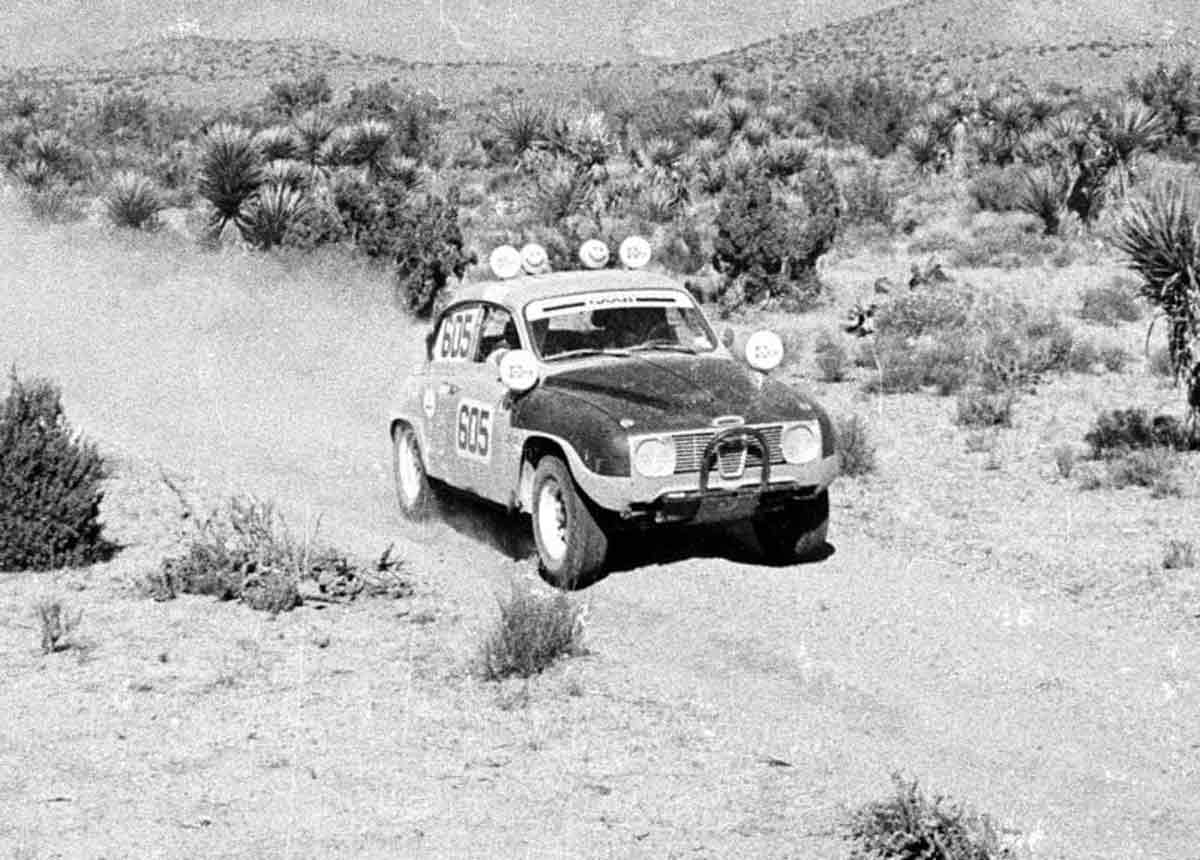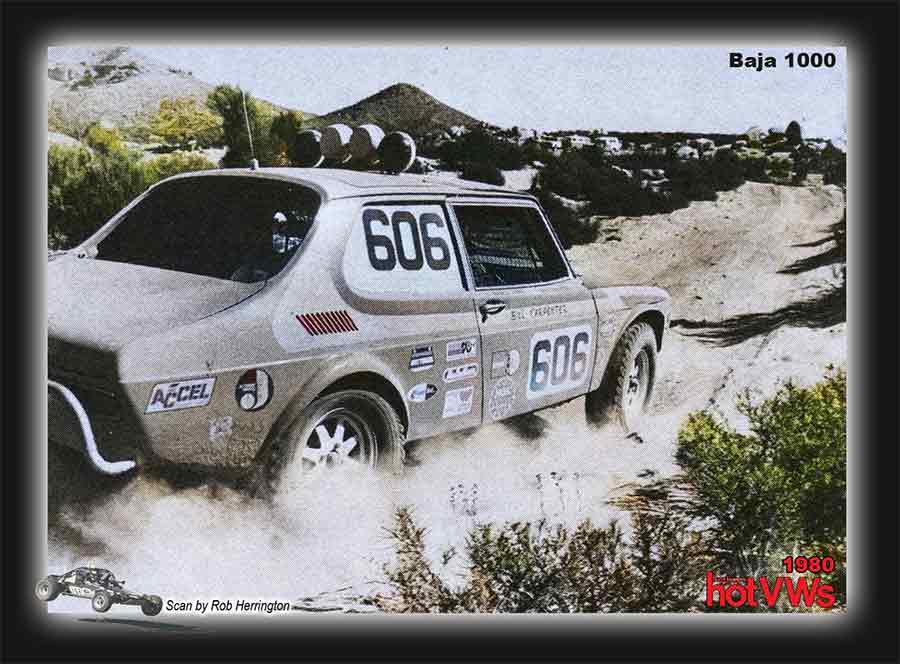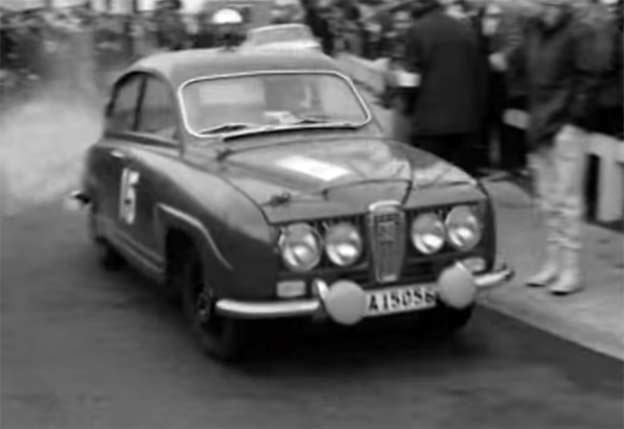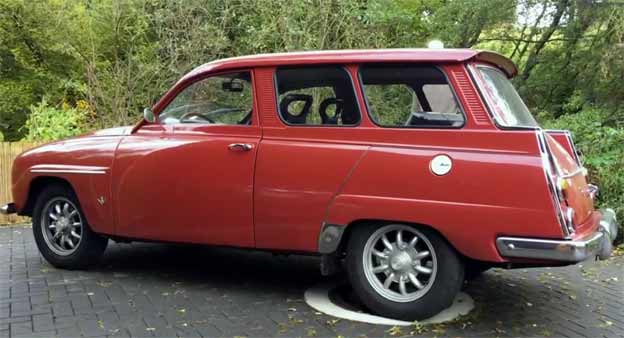Building on the incredible success of Bill Carpenter’s 1976 SCORE Class 6 Championship-winning Saab 96, the world of North American off-road racing witnessed another chapter in his rally career. Carpenter’s passion for motorsport and Saab’s rally heritage didn’t end with his legendary Saab 96; it continued into the early 1980s with his formidable Saab 99, a car that proved just as capable and influential as its predecessor.
Thanks to insights from Justine Johnston, a notable Saab enthusiast and rally expert, we have a deeper understanding of Carpenter’s later achievements and the challenges he faced with his Saab 99.
Table of Contents
- 1 A New Chapter: The Transition from Saab 96 to Saab 99
- 2 The 1980 Season and Carpenter’s Relentless Pursuit of Victory
- 3 Inside the Cockpit: Co-Drivers and the Saab’s Off-Road Legacy
- 4 The 1980 Parker 400: A Snapshot of Success and Struggles
- 5 The Final Chapter: The Saab 99’s Last Race and Legacy
- 6 Saab’s Strength in Off-Road Racing: An Engineering Feat
- 7 Reflecting on Carpenter’s Legacy: Saab’s Place in North American Rallying
A New Chapter: The Transition from Saab 96 to Saab 99
After his triumph with the Saab 96, Carpenter transitioned to the Saab 99 for the 1980 racing season. The move wasn’t merely about upgrading to a newer model; it marked a new challenge for Carpenter, who sought to replicate the success of his earlier car. However, as Justine Johnston recounts, Carpenter’s journey with the Saab 99 was no smooth ride. Unlike the 96, which was a well-established rally car, the 99 brought a new set of mechanical challenges, particularly its automatic transmission.

In an effort to improve ground clearance for the rugged Baja terrain, Carpenter and his team had to lift the front motor mount, which resulted in the carburetors and distributor cap protruding through the hood—a modification clearly visible in photos from the period. This setup, while effective for off-road racing, presented its own set of complications and was one of the defining features of this remarkable vehicle.
The 1980 Season and Carpenter’s Relentless Pursuit of Victory
The 1980 season was a pivotal year for Bill Carpenter. Racing in the Parker 400 and other key events, he found himself consistently finishing in second place—a fact that, according to Johnston, didn’t sit well with Carpenter. Despite his stellar performances, Carpenter had a winning mindset, and these second-place finishes were seen as missed opportunities rather than triumphs.
One of the standout features of Carpenter’s Saab 99 during this period was the Baja 1000 sticker proudly displayed on the car’s front fender. This commemorated his previous successes, including his earlier victory with the Saab 96. Carpenter’s 99 was a true off-road beast, lighter than the 96 but retaining the strength needed to tackle some of the world’s most challenging racing environments.
Inside the Cockpit: Co-Drivers and the Saab’s Off-Road Legacy
One of the unique aspects of Carpenter’s racing career was his close collaboration with co-drivers, including Frank Ball, who had previously raced a Datsun 510. Carpenter’s Saab 99 was notorious for its strength, especially compared to Ball’s previous car, which had developed structural cracks. The Saab 99, by contrast, held together under the extreme stresses of off-road racing, a testament to the engineering prowess of Saab’s rally cars.

As Justine Johnston shared, the 99 wasn’t without its quirks. In one notable instance, she recounted how the firewall, only glued where it met the floorboard, eventually began to push forward after several races due to the co-driver’s feet. Additionally, Johnston mentioned a key safety issue: the handhold on the roll cage. Co-drivers like Johnston had to be vigilant during races, knowing to drop their hands when approaching large bumps, as the 99’s frame tended to shift under extreme conditions, risking a dangerous pinch.
The 1980 Parker 400: A Snapshot of Success and Struggles
The 1980 Parker 400, one of the season’s most grueling races, epitomized both the strengths and challenges of Carpenter’s Saab 99. As Justine Johnston shared, she was in the passenger seat during this race, gripping the roll cage and feeling every bump as they tore across the desert. The 99’s durability and speed were undeniable, but the race also revealed the toll that off-road racing took on even the most robust cars.
Carpenter’s Saab 99 had been modified for maximum performance, but its journey would come to an abrupt end. After a string of races, Carpenter’s electrical engineering career began to take off, and his focus shifted away from racing. The 99, despite its promise, was soon left sitting, untouched for a period, until it was eventually sold to a dealer who aimed to revive it for the 1982 season.
The Final Chapter: The Saab 99’s Last Race and Legacy
In 1982, the Saab 99 returned to the Baja 1000, but this time under different circumstances. The car was purchased by a dealership looking to form a racing team, with Carpenter stepping away from the driver’s seat. However, the race proved disastrous for the dealership owner, who lost control of the car and crashed into a spectator’s pickup truck. The damage was significant, and the car was never fully repaired. As Justine Johnston revealed, the 99 was eventually scrapped, marking the end of its racing career.
Despite this unfortunate conclusion, the Saab 99’s legacy remained intact. The car had proven its worth in one of the world’s most difficult racing environments, and it became a key part of the broader Saab rally narrative. Carpenter’s time with the 99 may have been brief, but his skill behind the wheel and his ability to push the car to its limits ensured that it would never be forgotten by those who witnessed its dominance.
Saab’s Strength in Off-Road Racing: An Engineering Feat
Throughout Bill Carpenter’s racing career, one theme remains consistent: the extraordinary durability and strength of Saab’s cars. Both the Saab 96 and Saab 99 were built with incredible attention to detail, ensuring they could withstand the harsh conditions of desert racing. From the factory-built “T cars” of the 1970s to the later modifications made to Carpenter’s 99, Saab’s engineering was consistently at the forefront of rallying innovation.
As Justine Johnston pointed out, when Gunnar Ljungstrom and his team designed the Saab 92, they relied on little more than slide rules for their calculations. By the time they were working on the Saab 99, the engineering team had grown to 300 individuals, and the tools available to them had vastly improved. Despite these advancements, the spirit of ingenuity that characterized Saab’s early cars remained, resulting in vehicles that were both lightweight and immensely strong—perfect for the brutal conditions of off-road racing.
Reflecting on Carpenter’s Legacy: Saab’s Place in North American Rallying
The story of Bill Carpenter’s Saab 96 and 99 is not just the tale of one driver’s success; it’s a vital chapter in the larger history of Saab in North American motorsport. Through his championship wins and hard-fought races, Carpenter helped cement Saab’s place as a respected brand in off-road rallying, particularly in the challenging deserts of Baja. Today, thanks to the efforts of individuals like Justine Johnston, the legacy of Carpenter and his cars lives on.
The Saab 99 may have ended its days in a scrapyard, but its impact on off-road racing is undeniable. As Saab enthusiasts continue to preserve and celebrate these cars, we are reminded of the brand’s enduring legacy—a legacy that goes beyond the cars themselves and speaks to the ingenuity, dedication, and passion of those who drove them to victory.











